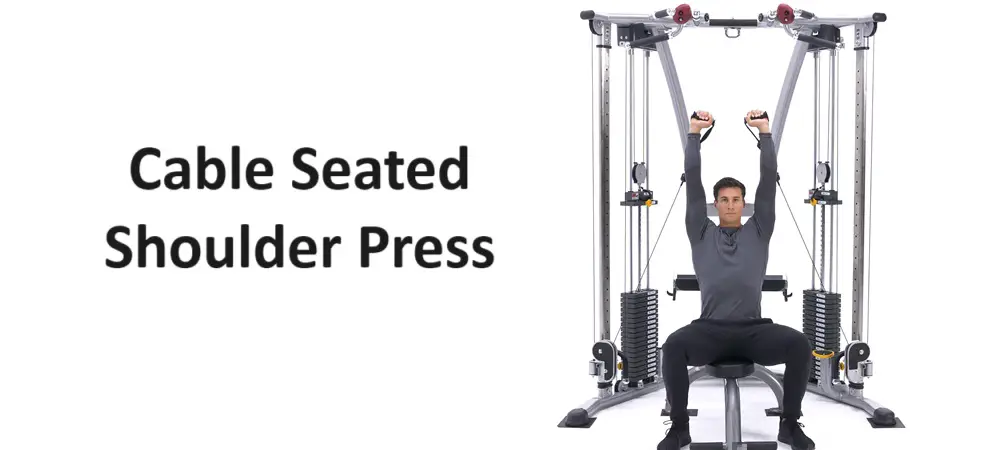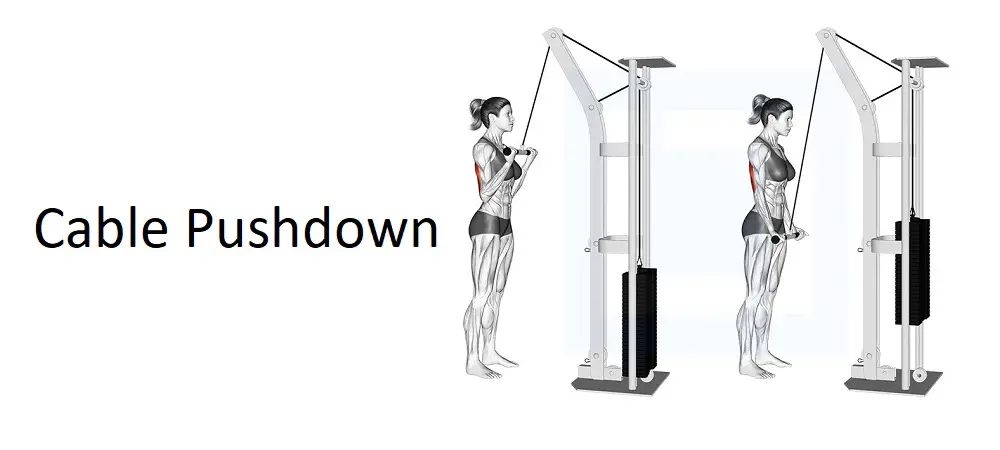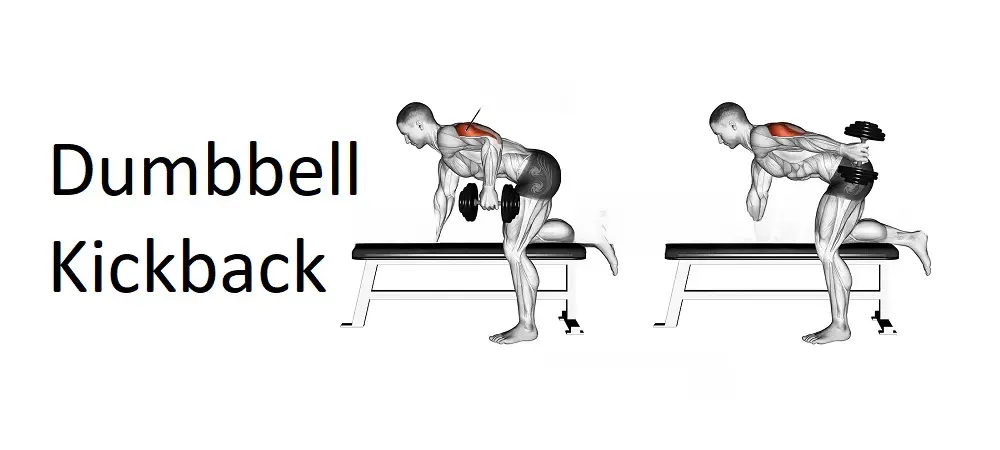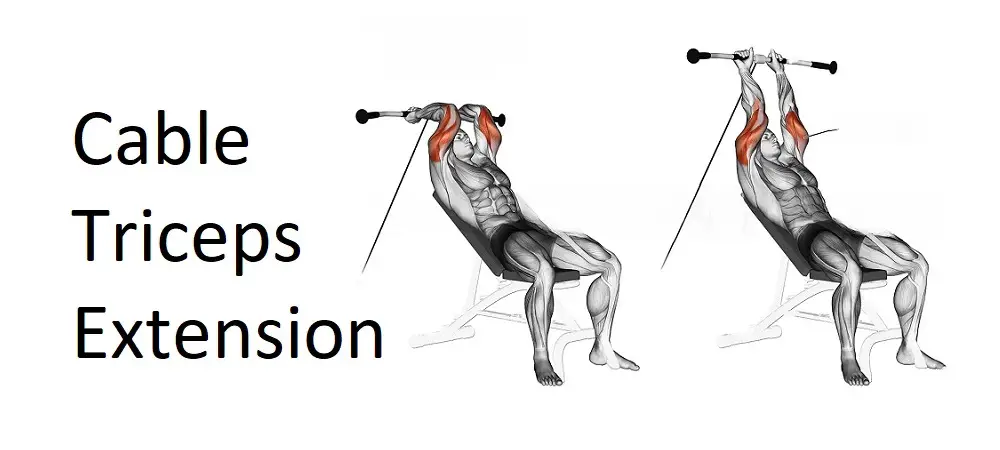Table of Contents
Introduction of Cable Seated Shoulder Press
The cable seated shoulder press is an effective strength training exercise designed to target the deltoid muscles in the shoulders, as well as engage the triceps and upper chest. Performed using a cable machine, it involves sitting on a bench with back support and pressing a set of cable handles or a bar upward until the arms are fully extended. This exercise helps improve shoulder stability, enhance upper body strength, and support overall shoulder joint health. Adjusting the seat height and weight allows for customized resistance and better alignment, making it a versatile addition to any workout routine.
Instructions for Cable Seated Shoulder Press
Here’s a step-by-step guide to performing the cable seated shoulder press:
- Setup: Adjust the cable machine to a low position. Attach the appropriate handles or a bar to the low pulleys.
- Seating: Sit on a bench with back support. Make sure your feet are flat on the floor and your back is pressed firmly against the backrest.
- Grip: Grab the handles or bar with a neutral or slightly pronated grip (palms facing forward). Position the handles or bar just above shoulder height.
- Starting Position: With your elbows bent and forearms parallel to the floor, lift the handles or bar to shoulder height. Keep your back straight and core engaged throughout the movement.
- Press: Push the handles or bar upward in a controlled manner until your arms are fully extended. Avoid locking your elbows at the top.
- Lower: Slowly lower the handles or bar back down to the starting position, maintaining control and keeping your movements steady.
- Repetition: Perform the desired number of repetitions, typically 8-12 per set, depending on your training goals.
- Finish: Once you’ve completed your sets, carefully release the handles or bar and adjust the machine settings if necessary.
Remember to use a weight that challenges you without compromising your form.
Benefits
The cable seated shoulder press offers several key benefits:
- Shoulder Strength: Primarily targets the deltoid muscles, helping to build and strengthen the shoulders, which is essential for overall upper body strength and stability.
- Muscle Engagement: Engages not only the deltoids but also the triceps and upper chest, providing a comprehensive upper body workout.
- Improved Stability: The seated position with back support stabilizes the torso, allowing for a focus on shoulder strength without engaging the lower back, making it ideal for those with back issues.
- Controlled Movement: The cable machine provides constant tension throughout the exercise, which can enhance muscle activation and improve overall effectiveness compared to free weights.
- Adjustable Resistance: Allows for precise adjustments in weight and position, making it easier to tailor the exercise to individual strength levels and goals.
- Reduced Joint Stress: The controlled motion of the cable machine can reduce the risk of joint strain or injury, particularly in the shoulder joints.
Incorporating the cable seated shoulder press into your routine can contribute to better shoulder development, increased upper body strength, and improved muscle definition.
Muscles worked in Cable Seated Shoulder Press
The Cable Seated Shoulder Press is a great exercise for targeting the muscles in your shoulders. Here are the primary muscles worked:
- Deltoids: The main muscle group targeted, especially the anterior (front) and lateral (side) deltoids. The posterior (rear) deltoids are also engaged but to a lesser extent.
- Triceps Brachii: These muscles at the back of your upper arms help extend your elbows during the press.
- Trapezius: The upper part of the trapezius helps stabilize the shoulder girdle during the movement.
- Rhomboids: Located between the shoulder blades, these muscles assist in stabilizing the shoulder blades.
- Serratus Anterior: This muscle, located on the side of your chest, helps to stabilize the shoulder blade and allows for smooth shoulder movements.
In addition to these primary muscles, stabilizer muscles in the core and upper back also work to maintain proper posture and balance during the exercise.
Video on How to do Cable Seated Shoulder Press
Other names of Cable Seated Shoulder Press
The Cable Seated Shoulder Press is known by a few other names or variations in different gym settings or exercise resources. Some of these include:
- Cable Shoulder Press: A more generic term for shoulder pressing movements done with a cable machine.
- Cable Seated Press: Emphasizes the seated position and the use of cables.
- Cable Overhead Press: Highlights the overhead pressing motion using a cable machine.
- Cable Machine Shoulder Press: Describes the use of the cable machine for the shoulder press exercise.
While these terms might be used interchangeably, they all refer to similar movements focusing on the shoulders, with slight variations depending on the specific machine or setup.
FAQs
What is the Cable Seated Shoulder Press?
The Cable Seated Shoulder Press is a resistance exercise performed using a cable machine, where you press weights overhead while seated. It primarily targets the deltoid muscles of the shoulders, along with the triceps and upper back.
How do I perform the Cable Seated Shoulder Press?
Setup: Adjust the seat height so that the handles are at shoulder level when seated.
Grip: Grab the handles with an overhand grip, elbows bent, and hands just outside shoulder width.
Position: Sit with your back straight and feet flat on the floor. Press your shoulder blades down and together.
Press: Extend your arms upward, fully straightening your elbows without locking them out.
Lower: Slowly return to the starting position with controlled movement.
What muscles does the Cable Seated Shoulder Press target?
It primarily targets the deltoid muscles (especially the anterior and lateral deltoids), but also engages the triceps, trapezius, rhomboids, and serratus anterior.
How many sets and reps should I do?
For general strength and muscle building, aim for 3-4 sets of 8-12 reps. Adjust according to your fitness goals and experience level.
Can beginners do the Cable Seated Shoulder Press?
Yes, beginners can do this exercise, but it’s important to start with light weights to master proper form and avoid injury. If you’re new to resistance training, consider working with a trainer to ensure you’re using correct technique.
What are common mistakes to avoid?
Using Too Much Weight: This can lead to poor form and potential injury.
Arching the Back: Maintain a neutral spine to avoid lower back strain.
Not Full Range of Motion: Ensure you press the weights fully overhead and lower them back down completely.
Locking Elbows: Avoid locking your elbows at the top of the movement.
Can I do the Cable Seated Shoulder Press if I have shoulder issues?
If you have shoulder problems, consult a healthcare professional or physical therapist before performing this exercise. They can provide guidance or suggest alternative exercises that are safer for your condition.
How does the Cable Seated Shoulder Press compare to the Barbell or Dumbbell Shoulder Press?
The Cable Seated Shoulder Press offers constant tension throughout the movement due to the cables, which can provide a different muscle engagement compared to free weights like barbells or dumbbells. It also requires less stabilization, which can be beneficial for isolating the shoulder muscles.
Can I adjust the difficulty of the Cable Seated Shoulder Press?
Yes, you can adjust the weight on the cable machine to increase or decrease the difficulty of the exercise. Some machines also allow you to adjust the angle or grip to vary the exercise.
Are there any alternatives to the Cable Seated Shoulder Press?
Yes, alternatives include the Barbell Shoulder Press, Dumbbell Shoulder Press, Arnold Press, and Machine Shoulder Press. Each variation targets the shoulders differently and can be used to diversify your workout routine.
Conclusion
The Cable Seated Shoulder Press is an effective exercise for developing shoulder strength and muscle definition. By using a cable machine, it offers constant resistance throughout the range of motion, which can enhance muscle engagement and growth.
Key Points:
- Targets: Primarily works the deltoids, with secondary emphasis on the triceps, trapezius, rhomboids, and serratus anterior.
- Execution: Proper form is crucial to avoid injury—focus on a controlled movement, maintain a neutral spine, and use an appropriate weight.
- Variability: It can be adjusted in terms of weight and grip, and it’s a good alternative or complement to free weight shoulder presses.
- Considerations: Beginners should start with lighter weights to master technique. Those with shoulder issues should consult a professional before incorporating this exercise.
Incorporating the Cable Seated Shoulder Press into your routine can contribute to well-rounded shoulder development, improved strength, and enhanced upper body stability. Whether you’re aiming for muscle growth, strength, or improved posture, this exercise can be a valuable addition to your workout regimen.








